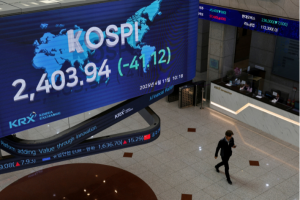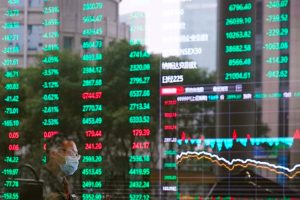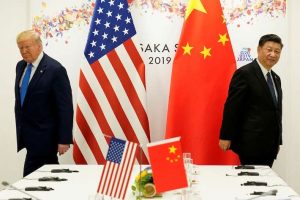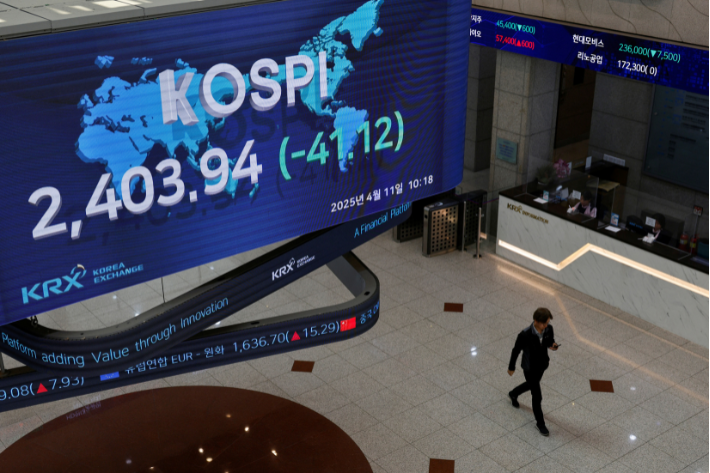After a record year of issuance in 2020, with about $324 billion of new Asia USD bonds issued, the expectation for 2021 is for Asia USD bond issuance to exceed $300 billion – as the prevailing low interest rate environment will naturally motivate borrowers to raise debt and refinance, in order to lock in a lower funding cost.
Supported by strong investor demand for debt, Asia USD bond issuance surged to more than $58 billion in January, exceeding the previous record in September 2020.
The rise in US Treasury yields since the start of the year, particularly at the 10-year-or-longer end of the curve, has dampened investor interest in longer-term bonds. Nevertheless, this has not deterred borrowers from printing notes of the 3 to 5-year tenure range, where US Treasury yields have been more stable.
Read more: India orders disclosure on all cryptocurrency dealings
In the recent global sell-off, corporate bonds have so far outperformed government debt. We expect overall corporate bond returns, especially high quality (not necessarily investment grade) issues in the 3 to 5-year segment, to remain resilient against the trend of rising rates.
Within the government bond sector, 1 to 3-year bonds have held up well due to flush liquidity in the financial system, and an expectation that central banks will maintain their accommodative policy through 2021.
Across the sectors in the Asian USD credit market, we believe Asian high yield (HY) bonds continue to have the best risk-adjusted prospective returns in comparison with other HY markets such as the US or European HYs. The lower expected default rates this year also imply that while spreads have tightened, they remain sufficient to compensate investors for the risk.
In addition, a large segment of Asian high-yield bonds, the Chinese property developer credits, are now constrained by the Three Red Lines reform and prevented from leveraging up excessively. This, coupled with improving global growth, should support the fundamentals of Asian borrowers in the near-to-medium term.
CREDIT SELECTION
Nevertheless, the recent rising defaults and tightening liquidity in China may trigger bouts of volatility. We see such bouts as buying opportunities for long-term investors, bearing in mind that credit selection is key.
The ability to differentiate among credits and be selective is important in the current phase of the credit cycle, where some companies will struggle when the liquidity support provided since 2020 starts to fade.
Asian domestic interest rates have risen in sympathy to US interest rates in the recent months. This has led the market to price in policy rate hikes in most Asian local markets in the coming 12-to-18 months, a scenario which we believe is unlikely. We see value in the short-end of most local government bond curves.
With Asian central banks remaining highly accommodative and supportive, we expect Asian rates to outperform US rates amid the overall rise in yields. Inflows to Asia will persist amid a reflationary market environment and improving risk sentiment.
CAPPED YIELDS
Some of these flows will find their way into Asia’s fixed income markets. Structural duration demand from domestic long-term investors, such as pension funds and insurers, will continue to cap long-dated bond yields.
Across the Asian local currency bond markets, China onshore bond market is one, which we are positive on. China’s offshore USD bond market has grown tremendously in recent years, but the growth of its onshore bond market has been even more spectacular.
For instance, based on information from JP Morgan, total China onshore bonds outstanding nearly tripled from RMB 48 trillion ($7 trillion) in 2016 to RMB 116 trillion ($18 trillion) last year, while the offshore equivalent “just” doubled from USD 526 billion to $1 trillion.
China onshore bonds offer good relative value over their offshore counterparts. The ChinaBond Corporate Bond AAA Index (5-year) had a yield to maturity of 3.8% at the end of February, much higher than the 2.6% yield of offshore investment-grade bonds.
YIELD PREMIUMS
This gap has widened significantly since the second quarter of 2020, when the China Government began to tighten onshore monetary conditions. As the effect of policy normalisation fades, the yield premiums on onshore bonds may eventually fall closer to historical levels, which means better returns for onshore bond investors.
Other macroeconomic and market factors also support a long-term positive view on China onshore bonds. China’s vast asset management market is set to grow even larger in the years ahead, driving demand for onshore RMB bonds. Although Beijing has cut its budget deficit target for 2021, the overall fiscal policy stance remains pro-growth.
The government’s conservative economic growth target and signal of continued policy normalisation suggest that it is focused on tackling long-term challenges like deleveraging and reducing technological dependence on the west.
Higher inflation in the first half of 2021 is likely due to base effects and higher food and oil prices, but this will largely be transitory. A significant output gap remains across most Asian countries, which will limit the extent and magnitude of price increases for both goods and wages. In our view, the key risk for Asian fixed income markets is the potentially challenging credit cycle as the liquidity support put in place last year starts to fade.
SUDDEN SPIKES
Another key risk is the continued episodes of sharp and sudden spikes in US real yields, as the resulting increased volatility is typically negative for Asian fixed income assets and carry trades.
Such episodes are usually accompanied by a sell-off in the local currencies. While the wider spreads (versus developed markets) of Asian bonds provide some buffer to absorb higher UST yields, a further and substantial rise in real yields would leave Asian bonds vulnerable to the sell-off.
We will also be on the lookout for the evolution of geopolitical developments. There are hopes that the US-China trade tensions will be less disruptive and more predictable with the Biden administration, but the US is likely to retain a hawkish stance towards China.
We will have further clarity on Biden’s policy stance towards China in the latter part of the year, and any political risk premium that needs to be priced into Asian assets will then have to be reassessed.
- Low Guan Yi is the Chief Investment Officer for Fixed Income at Eastspring Investments
























